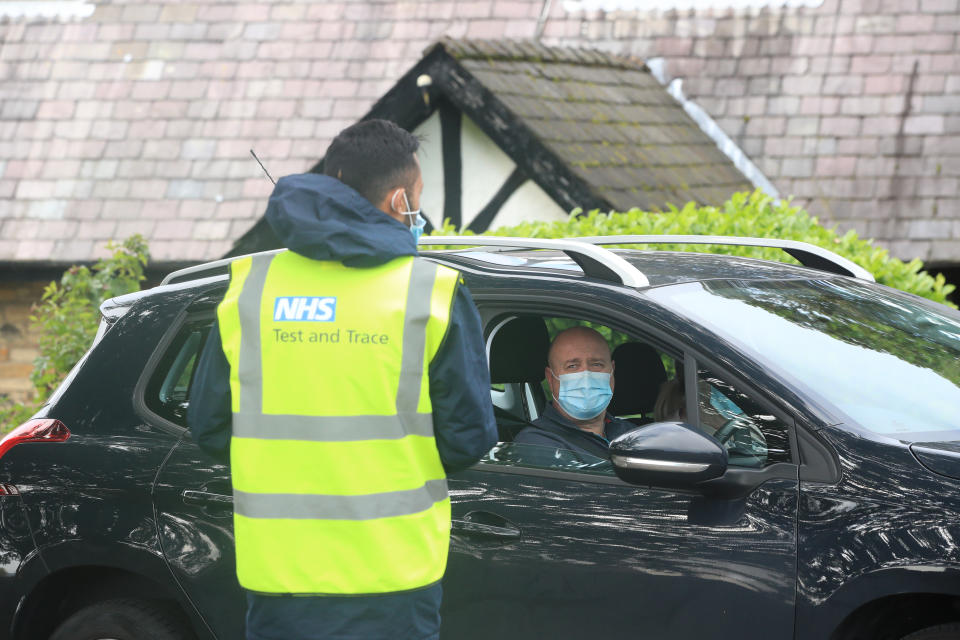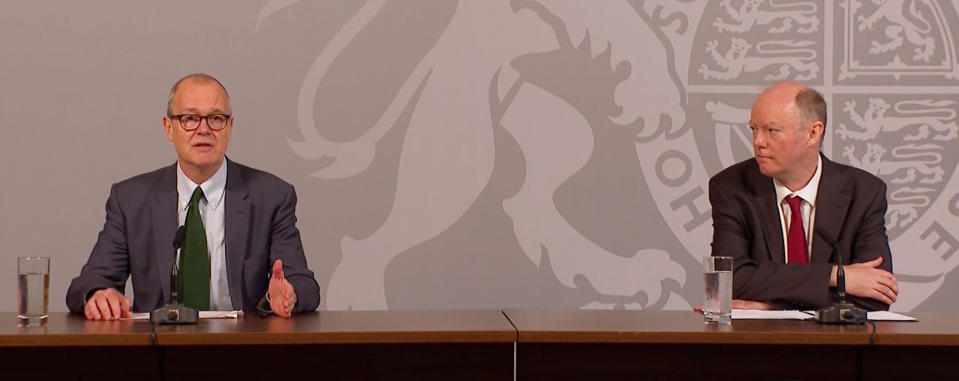20 places where number of coronavirus cases is increasing fastest

The government has released its latest figures outlining the areas of England with the highest rates of coronavirus cases.
The data, showing the rolling seven-day rate of new cases of COVID-19 for every local authority area in England, reveals a number of areas in the north experiencing sharp increases.
The towns making up the top five highest increase rates are Bolton, which recorded 565 new cases, followed by Preston, Hyndburn, Liverpool and Rossendale.
Rossendale, in Lancashire, has seen the fastest rate of increase, with the number of cases trebling in the past week from 61.6 to 176.3.
The towns with the lowest cases are Somerset West and Taunton, and Mole Valley – where they have been zero new cases in the past week.
England reported 4,368 new cases of COVID-19 on Monday, compared to 3,899 on Sunday, the government said.
Watch: Coronavirus outbreak has reached critical point, says Professor Chris Whitty
It said a further 11 people had died within 28 days of testing positive for COVID-19 as of Monday. This brings the UK total to 41,788.
Separate figures published by the UK’s statistics agencies show there have now been 57,500 deaths registered in the UK where COVID-19 was mentioned on the death certificate.
Read more: This is who can get a coronavirus test under the government's 'rationing' system

The daily numbers of cases has risen sharply in recent weeks to levels last seen in early May, when the pandemic was starting to abate in Britain.
Earlier on Monday, two of Boris Johnson’s top advisers warned that the UK could see 49,000 new cases by mid-October unless action is taken to slow the spread of coronavirus.
Chief scientific adviser Sir Patrick Vallance said such a scenario could see 200 daily deaths in November as hospitalisation figures increased.
Watch: Some of the most important moments from the coronavirus briefing
England’s chief medical officer Professor Chris Whitty said that if too little action was taken the virus would become “out of control”.
Prof Whitty said there were significant rates of transmission across the UK and that “we need to take the next six months very seriously”.
Read more: 5 biggest warning signs coronavirus could get much worse this winter
The prime minister is expected to reveal further restrictions on Tuesday following last week’s introduction of the “rule of six” in England, and there is growing speculation that the UK could face a second national lockdown.
The latest figures, for the seven days to 18 September, are based on tests carried out in laboratories (pillar one of the government’s testing program) and in the wider community (pillar two).
The rate of infection is expressed as the number of new cases per 100,000 people.
In Bolton, 565 new cases were recorded in the seven days to 18 September – the equivalent of 196.5 per 100,000 people.
Bolton continues to record the highest rate in England, though it is down from 213.5 in the seven days to 11 September.
Rossendale has the second highest rate, up sharply from 61.6 to 176.3 with 126 new cases.
Preston is in third place, where the rate has risen from 106.2 to 156.5, with 224 new cases.
Here is the list in full:
From left to right: name of local authority; rate of new cases in the seven days to September 18; number (in brackets) of new cases recorded in the seven days to September 18; rate of new cases in the seven days to September 11; number (in brackets) of new cases recorded in the seven days to September 11.
Bolton 196.5 (565), 213.5 (614)
Rossendale 176.3 (126), 61.6 (44)
Preston 156.5 (224), 106.2 (152)
Hyndburn 155.5 (126), 127.1 (103)
Liverpool 155.0 (772), 101.6 (506)
Halton 153.8 (199), 62.6 (81)
Blackburn with Darwen 146.3 (219), 125.6 (188)
Knowsley 141.9 (214), 100.1 (151)
Burnley 141.7 (126), 97.8 (87)
Bury 141.4 (270), 96.9 (185)
South Tyneside 140.4 (212), 98.7 (149)
Oldham 132.4 (314), 114.7 (272)
Manchester 131.1 (725), 82.8 (458)
Salford 120.9 (313), 88.9 (230)
Rochdale 118.7 (264), 92.2 (205)
Wirral 118.2 (383), 96.3 (312)
Bradford 116.9 (631), 101.3 (547)
Pendle 116.2 (107), 58.6 (54)
St Helens 115.7 (209), 99.7 (180)
Tameside 113.0 (256), 113.5 (257)
Coronavirus: what happened today
Click here to sign up to the latest news and information with our daily Catch-up newsletter


